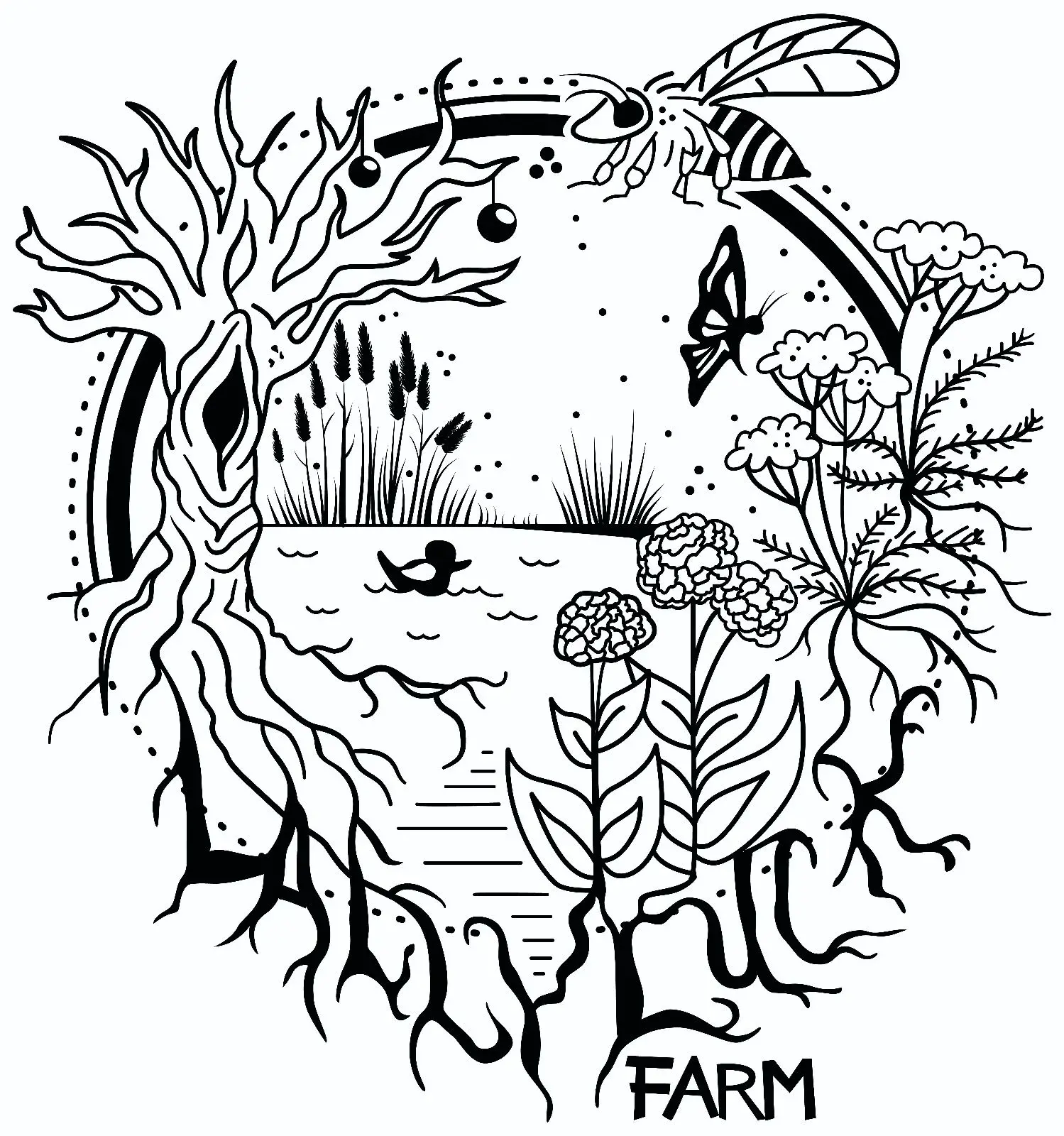Photo Description
Top Left: Tree unbalanced. Left side producing little. Right side producing well.
Top Right: Shown from opposite side. Full limbs visible without flowering.
Bottom left: Close up of the left side of the tree. Several branches not flowering down full length.
Bottom right: Closer view of the graft and up.
Please do ask for any more clarifying photos if you think it would help.
Questions:
-
The tree just started blooming this week. Is it too late to start pruning or should I wait until Autumn?
-
Pruning the tree is going to make it even more lopsided than it already is. Would you all recommend trimming back the healthy branches so it’s not so heavy on one side?
-
This website gives the advice below. Any thoughts otherwise?
Thank you all so much!
How to Prune a Weeping Cherry Tree
The different types of weeping cherries can grow to between eight and 40 feet tall. Proper pruning keeps these trees looking beautiful and can prevent the development and spread of diseases. Prune while the tree is dormant (no flowers or leaves on the branches) in early spring or late fall. Take the following steps once a year with bypass pruning shears or a pole pruner.
- Cut back any branches that contact the ground until they’re at least six inches off the ground.
- Remove branches that are rubbing against each other.
- Trim back branches that are closer than two inches apart.
- Remove dead branches.
- Remove stems or branches growing out of the trunk or around the base of the tree (a.k.a. suckers).
- Trim back the tips of the branches around the perimeter of the canopy until it’s a balanced, uniform shape.
- Remove branches that are growing straight up on grafted cherry trees because they will continue to grow upward instead of weeping down.
- Thin out the mangled cluster of branches that often develops near the base of the canopy of grafted trees.
- Remove diseased branches as soon as they’re discovered, regardless of the time of year. Sterilize the blade of your cutting tool in between cuts to prevent disease spread.
Probably fine to prune as long as you are conservative about how much you remove. Pruning while the tree is actively growing can increase the risk of reactionary growth caused by removing too much. But in general with a light touch it’s usually OK to prune at any time of year.
I wouldn’t try to balance the tree by removing more than necessary unless you have some reason to think it’s unstable. For a small tree like this, the weight difference probably won’t be that significant.
If you are worried about it, you could leave some lower-priority pruning cuts for next year. Pruning is a process, it doesn’t need to happen all at once unless there is an issue of health or safety.
Thank you so much for your response! Based on your light touch description, now is probably not the time to prune the dead branches from the more bare side. I agree that the tree doesn’t seem unbalanced, albeit the trunk isn’t entirely vertical and leans a bit towards the fuller side. I agree that it’s lack of density isn’t likely the cause or an issue.
The bareness of one side is curious to me. I wish I could contact the previous owner. I also wonder if the magnolia tree, offset about 40ft/12m, has a part in that. It’s about 45ft/13.75m tall itself. The magnolia is far off enough so as to not shade the weeping cherry at all, but perhaps the resource competition could be an issue?
What time of year do you recommend pruning of dead branches?
I don’t suppose you know of any magic that will coax the sparse side to start produce more?
Regarding what I said, I was referring to live tissue. The rule of thumb is to remove no more than 25% of living branches in any one season but for reasons already mentioned I would do less that that. However, dead branches are not counted and can be removed at any time. This is probably advisable because they could be harboring diseases or fungi. That said, if there are a lot of them and removing them will expose the trunk to a lot of extra sunlight there may be extra steps needed to protect the bark, particularly if you are in a hot climate.
I doubt the magnolia is having much effect on the asymmetry here. Usually you only see that in cases of shading or direct physical contact. It’s probably some other health issue. Could be a disease. Prunus in general are fairly short lived and disease prone but I’m not familiar with this particular species/cultivar.
The first step is to ensure the tree is getting the proper care. Fertilizer isn’t usually needed unless there are signs of nutrient deficiency but a thin layer of compost spread on the surface of the soil can alleviate any concern you may have and improve the soil quality overall. Then add a thicker layer of mulch (about 4 inches deep, wood chips are best) to cover the root area, at least out to the tips of the branches but avoiding direct contact with the trunk.
Check on the soil moisture regularly and irrigate deeply when the surface becomes dry (usually not necessary until summer). As above you want to irrigate the entire root zone, particularly towards the outer edge and avoid the area immediately around the trunk.
I would also look for any extension or other local resources to see if there are any common diseases of this tree in your area, then watch for symptoms during the growing season. If so, they may or may not require a specific intervention. But identifying them is the first step.
Regarding the lean, I would also tug and push on the base of the trunk a bit to see how firmly attached it is to the ground. A well anchored tree may flex a bit but will not shift in relation to the ground.If it’s not well anchored, this may indicate a soil or root issue.
dead branches are not counted and can be removed at any time. This is probably advisable because they could be harboring diseases or fungi.
great tip. thank you!
if there are a lot of them and removing them will expose the trunk to a lot of extra sunlight there may be extra steps needed to protect the bark, particularly if you are in a hot climate.
I suppose it depends on what you mean by “hot.” The worst it gets is perhaps 34 C / 93 F.
I would also look for any extension or other local resources to see if there are any common diseases of this tree in your area
great great idea.
Thank you for everything else. I feel like I have a lot to work with now.
That looks over pruned to me, There’s barely any flowering branches vs the trunk and that leads to less leaves to support the tree.
Look at this tree
You can see that it’s an even shape, and clearly cared for, but it has a massive canopy vs trunk. It’s not the same species but it’s an example of the balance.
This video is quite a severe prune and you can see that he hasn’t really taken a lot.
Leave it alone for now and then go for it in early spring.
However, if it’s so heavily pruned because you’re just taking off dead bits then it’s not a very healthy tree and I’d look at that first. I definitely water mine in the height of summer, which is an easy change to make, but it might need more.
Thanks for the response! The ideal photo you shared for the even shape and care is definitely what I would like to see. I’m concerned the tree we inherited isn’t in the best of health, but I would like to see that change however possible.
The video you shared was excellent. My main concern is that the “left” side of the tree is clearly less dense and currently has several dead branches. That’s readily evident now that it’s flowering. Pruning that side further, although it needs it, will exasperate the lack of balance even further. This is why I wondered if the healthy side should also be trimmed back to help even it out the aesthetic.
@[email protected] indicated in another comment not trim back the healthier part unless stability was the concern. I wouldn’t call it “unstable” based on the ground space and roots, but the trunk isn’t entirely vertical and leans a bit towards the fuller side. Not sure that would classify as a “stability” issue though. It’s not yet a dense tree.
I will check the soil this summer and water as needed as you suggest. Would you suggest anything else, perhaps certain kinds fertilizer, to help the tree?
When you said, “Leave it alone for now and then go for it in early spring.” Do you mean next year? Or next month? The photos were taken the day of the post. It’s very nearly “officially” spring and the tree is blooming.
Next year. It’s already flowering so it’s too late for this year. It will vary depending on where you are but I’d say maybe late feb?
I think you might be right that it isn’t in great health but I do think the overpruning is part of it. There just won’t be enough leaves to support that big thick trunk. I think adding nutrients might really help but I don’t want to recommend any as it’s not something I’ve had to do myself.
Thanks you for your responses. I really appreciate it.
I’d be interested to see some higher resolution images if you’ve uploaded them somewhere that handles higher file sizes. A hand behind the branches that aren’t growing as well will help to distinguish bud features, which may help folks make specific suggestions.
If your particular cherry sets small fruits after flowering, remove all the fruit as they appear. This will keep the tree in vegetative growth rather than fruit growth, and you can prune the better-performing side to allow the stunted side to catch up some.
Otherwise, like @LibertyLizard said, treat balancing the tree like an ongoing process and just do little bit at a time to favor new growth on the side that needs it.
If your particular cherry sets small fruits after flowering, remove all the fruit as they appear. This will keep the tree in vegetative growth rather than fruit growth, and you can prune the better-performing side to allow the stunted side to catch up some.
This is WAY cool. I’ve never heard of this, but I can easily follow the logic. Any science behind how beneficial this is towards vegetative growth? Are we talking a nominal increase or something much more significant like 25% or 50% increase? I honestly don’t know how much energy goes into fruit production.
I’ll try to find documentation on it but the rough & dirty version:
When a plant is pollinated and begins to set fruit, different chemical signalling occurs in a feedback loop between the roots and the fruits than the one that exists for vegetative growth. Flowering times are usually daylight and temperature dependent, so if its fruit fails the tree will (usually) focus on leaf mass to better support the next year’s attempt.
Thanks for this. It led me down a rabbit trails of education. There’s an inner desire growing for gardening and tree tending that seems to have just come out of nowhere. I hope I can do well by this tree and many others on my property.
Treesaregood.org is a good place to find great information to help you along.
There is a ton of info there. Thank you! Adding to my resource list.
You’re wish is my command!
Here is a photo of the bare side:

Here is the same photo marked up with RED being dead, GREEN being healthy, and BLUE circle marking where the dead branch and a healthy branch touch and merged. If I took all the dead RED branch back to the trunk, I wouldn’t know what to do with the part that fused to the healthy GREEN branch. In the photo, it looks like the dead branch (on top) is touching healthy branch (underneath), but they actually have perhaps a cm of space. However, that dead branch split and a sub-branch went underneath the healthy branch and fused along the way.

From opposite side of the previous photo, i wanted to show the fusion. Here is the original:

And here is the same, but marked up:
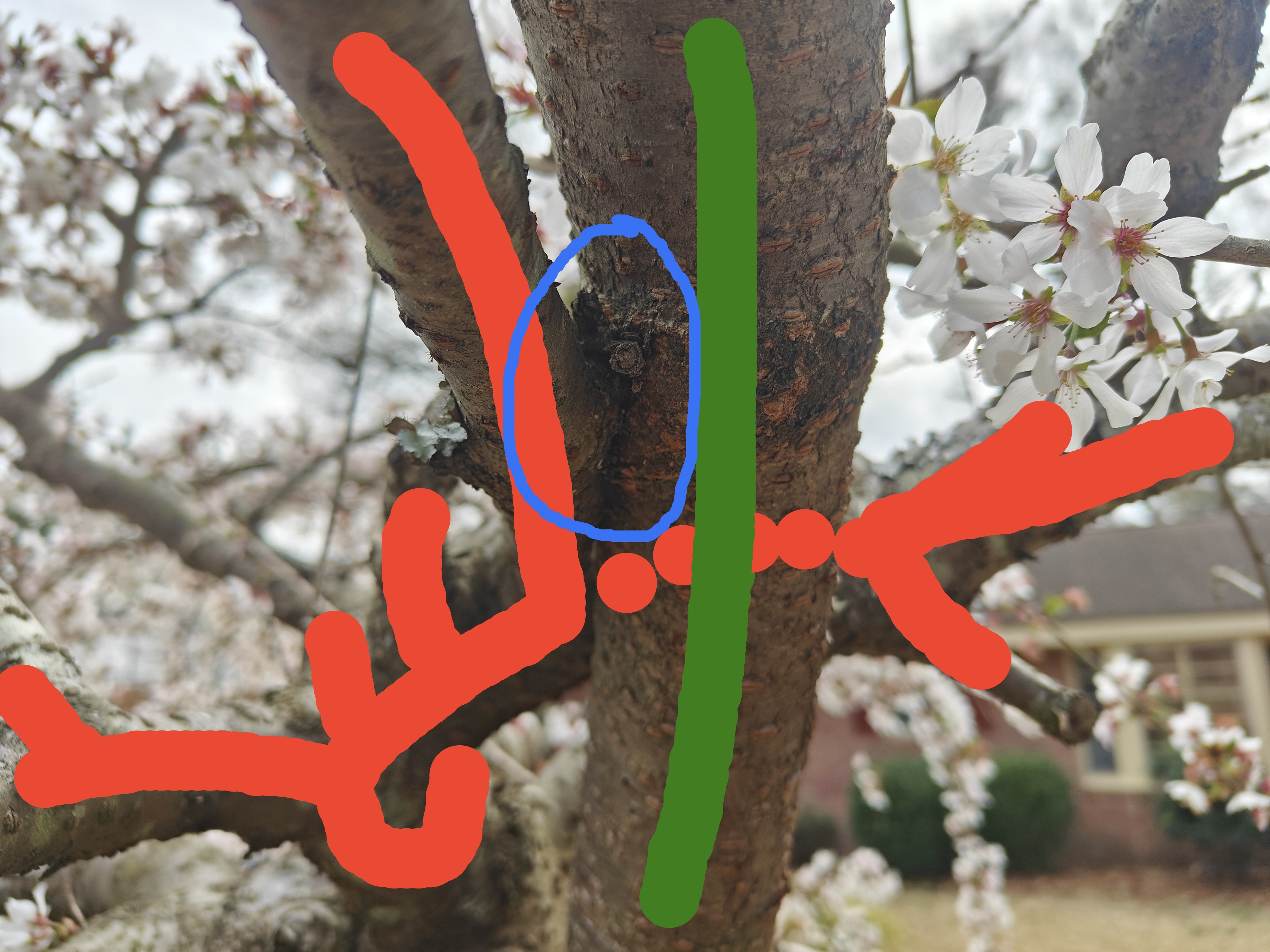
As for buds on what I call healthy vs unhealthy, here you are:

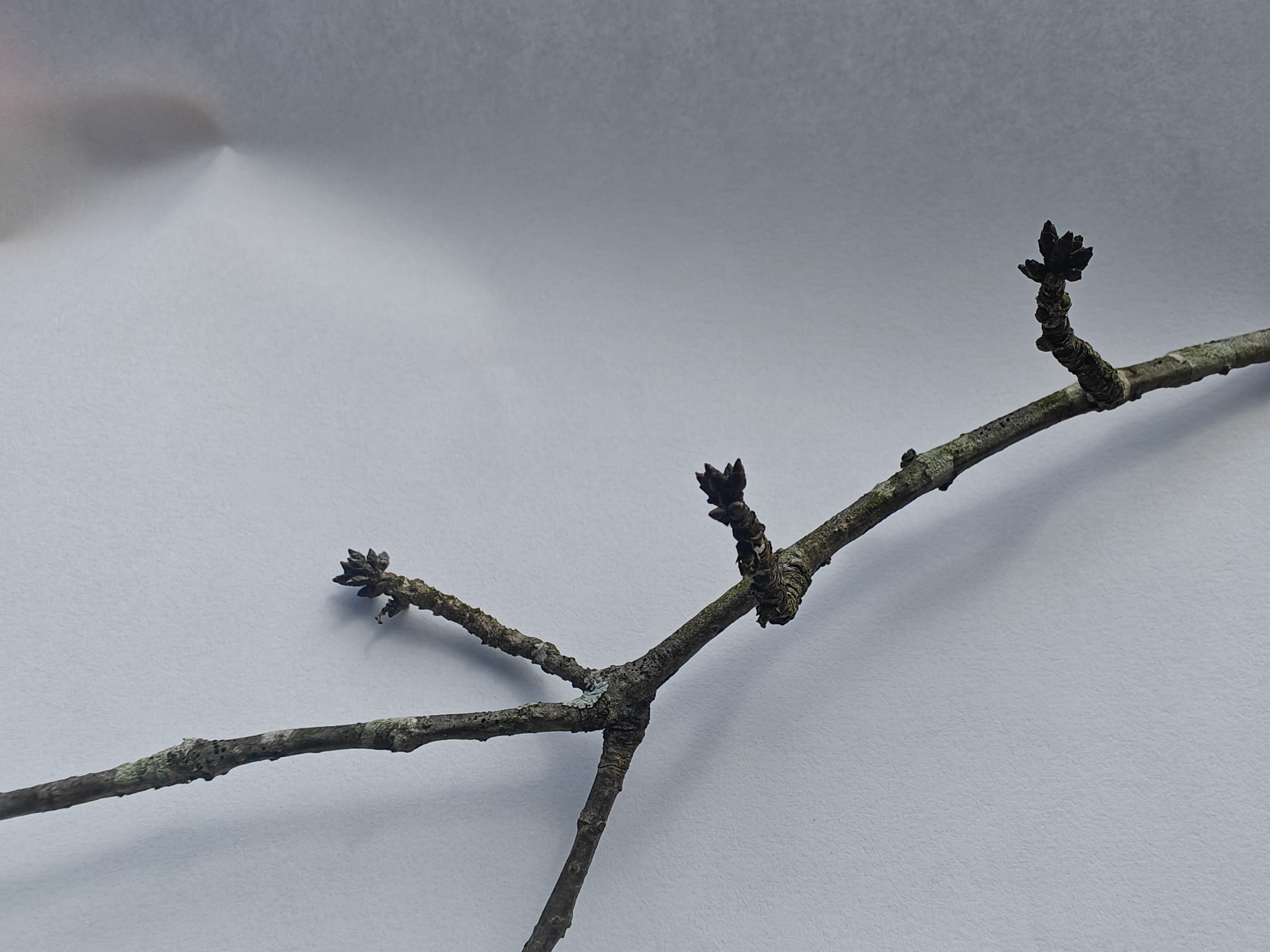
Previously, I though there was no new grow towards the sparse side, but I was VERY happy to see new growth in that direction. Although, I am worried it the two lower one may be too low considering it’s a graft? Perhaps they are fine.
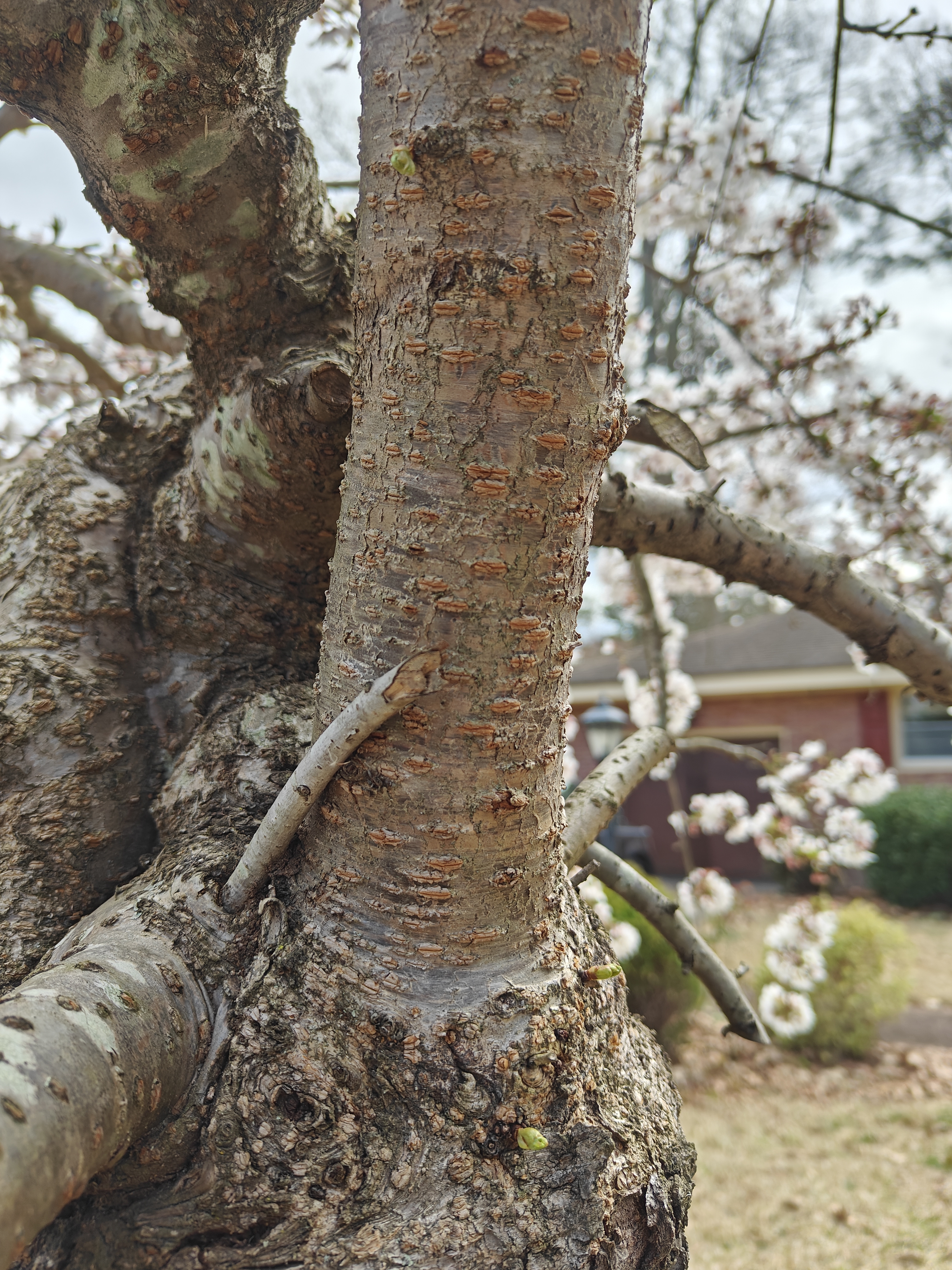
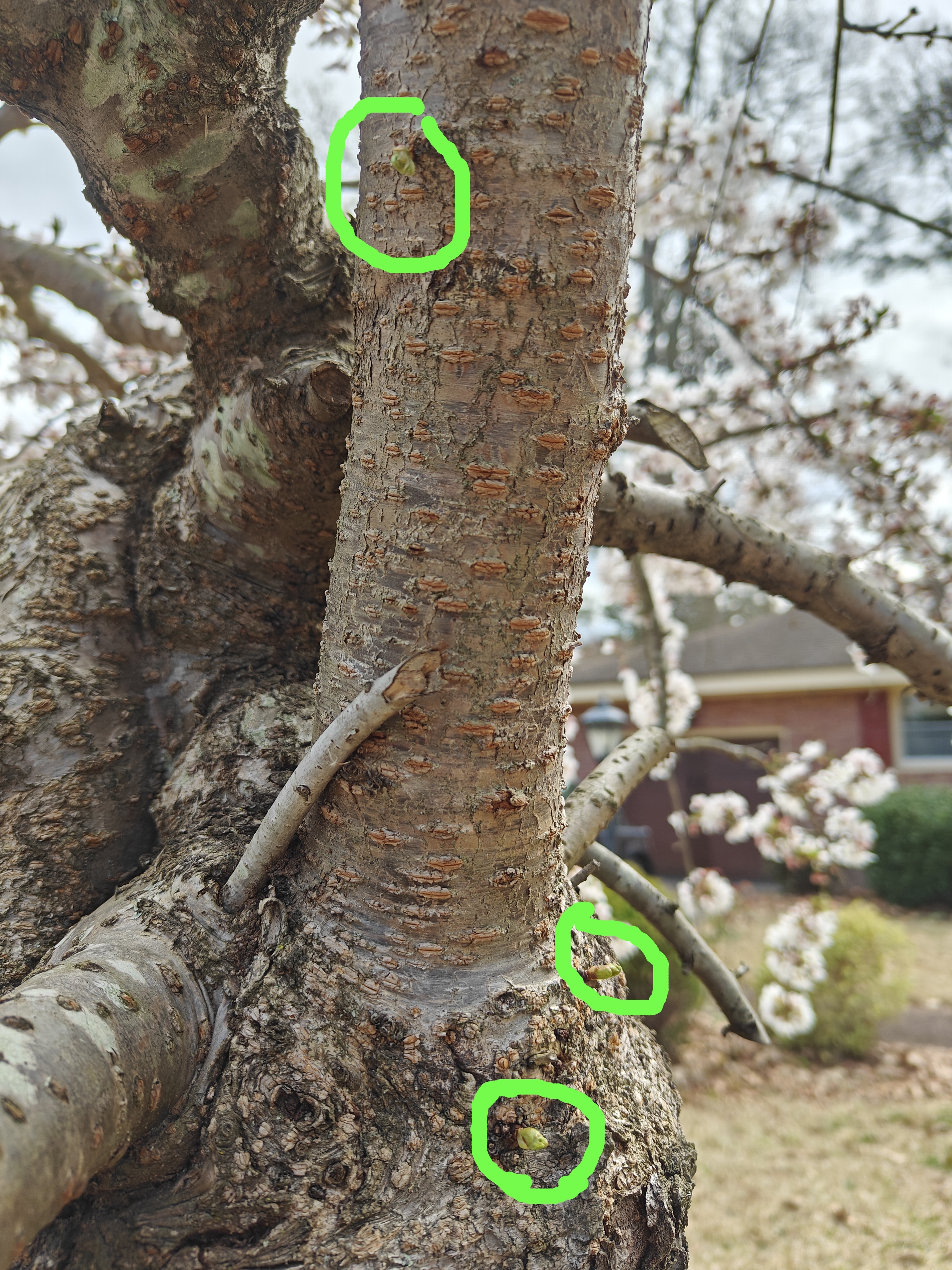
Please do let me know if other photos would be of help. As you might have guessed, I really do want to do right by this tree. The pollinators are loving it and I’d like to do better by them also!
These are very helpful, yes. I’d check the ‘dead’ branch with a scratch test along the length to be sure but if they fused around bark that’s a detrimental factor to consider in favor of removal. In case you’re unfamiliar, a scratch test is just taking a fingernail or sharp sterile blade and scratching away the outermost bark - if it’s brown all the way down she’s a dead branch but if she’s green there’s growth to be seen. If/when you end up removing it remove the weight past the live branch to reduce or prevent any extra bark damage.
As for those new buds: they appear high enough in the graft that I’d leave all three. The lowest might be from below the graft but it will still help to fill in that side this season so there’s no reason to remove them now. If anything, resterilize your knife and make small, delicate incisions just above each bud to promote their growth. The small wound will cause the growth hormone (auxin) to pool at the buds, giving them a boost this season. The additional growth should help you determine whether they’re from above or below the graft, and you can make a decision about them during their next dormant period.
What a wealth of info. Thank you!
If/when you end up removing it remove the weight past the live branch to reduce or prevent any extra bark damage Do you mean to say that only the dead limb beyond that which fused should be removed?
I was going to post a new question about this fusion. I was wondering if it should remain and how much, or… perhaps removing it entirely? If the latter, this would expose the live limbs flesh in a what I presume to be a negative manner. That them made me wonder if there was some sort of gum or salve to apply to allow it to heal and prevent problems like disease.
If anything, resterilize your knife and make small, delicate incisions just above each bud to promote their growth. The small wound will cause the growth hormone (auxin) to pool at the buds, giving them a boost this season. The additional growth should help you determine whether they’re from above or below the graft, and you can make a decision about them during their next dormant period.
This is really interesting. I will want to look into a bit more, but it sounds like it could really help. Thank you!
You may be reaching a point where there’s an increased risk of pests or diseases but if the fused branch is already presenting an increased risk it’s worth it to remove and observe how the tree closes the wound.
some sort of gum or salve to apply
Here’s what Purdue University has to say but the big takeaway is
There are few ways wound closure can be hastened, or at least not inhibited. First, it is essential to avoid limiting oxygen availability to the wounded tissues. Oxygen is necessary for proper recovery. For example, painting a wound with any kind of material that interferes or impedes oxygen will slow or even prevent wound closure by poor callus formation. Wound treatment with petroleum-based products is not recommended. In fact, research indicates any type of wound dressing can slow the healing proces
I think the best course of action if the fused branch is dead or rotty is to remove it and keep a close eye on the spot where they fused, and for any other disease indicators.
This is really great info. Thank you.
How I might I determine if “the fused branch is already presenting an increased risk.” I don’t see any evidence of anything strange currently. Only some tree lichen in some spots.
Some easy signs to look for are softness or sponginess of the dead branch, peeling bark, or mushrooms or mycelial growth in the area. Those, in my view, would constitute reason for immediate removal even during the growing season.
Does anyone happen to know why this sap has formed and what it might mean?

CC: @[email protected], @[email protected], @[email protected]
I hope you don’t mind me tagging you.
I agree with @Devi that it could be a number of things, and would echo @LibertyLizard’s suggestion to check your local extension office’s information to cross reference possible issues.
It’s basically impossible to know without more information. This is a nice article I found that seems to take you over the possibilities - https://titantreeaz.com/blog/why-is-sap-oozing-from-my-trees-trunk
Thank you, @[email protected]!
https://orchardpeople.com/gummosis-on-cherry-trees/
Basically it’s the tree’s way of protecting itself in response to some injury, pest, or disease. Since it’s small and often hard to specifically diagnose the cause I wouldn’t stress too much about it other than to monitor and see if it starts to grow or spread or resolves naturally.
Thank you! The link was also helpful. It reminded me how I saw spots on the leaves and I want to get a good close look this year and figure out what I can do about that.




